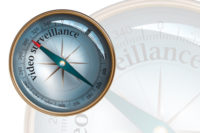When video surveillance footage helped lead to the capture of accused Boston Marathon bomber Dzhokhar Tsarnaev, supporters of video surveillance emphasized its value, while opponents of video surveillance simultaneously claimed it had failed. While admitting that surveillance aided in the investigation, they said it was ineffective at preventing and deterring the crime.
Enter video monitoring. Instead of passively recording video, what if analytics or an operator monitoring the event had flagged the backpacks left behind? Following the Boston Marathon bombing, New York City Police Commissioner Ray Kelly confirmed the city would expand its network of cameras, but more importantly, focus on monitoring the cameras as well as connecting them with artificial intelligence software so the city could act before a major crime occurred. They would use the city’s Domain Awareness System, an effort developed with Microsoft Corp., Redmond, Wash., utilizing a reported 3,500 to 6,000 cameras. This is not an everyday system or an everyday application. But the fundamental need for proactive video that provides greater safety and services is an everyday one — and multiple parties are interested.
Today’s video monitoring is maturing into a valuable, executable service offering that falls under the RMR business model, making it appealing to both security dealers and systems integrators as they consider making it part of their offerings. Law enforcement is interested because video verification of alarms and other security incidents leads to arrests and even crime prevention through interactive features and faster response times. Arrests and crime prevention have the insurance industry’s attention, protecting assets and reducing payouts, while end users — from enterprise companies down to individual home owners — are getting excited about real-world services such as guard tours, employee escort services, virtual doorman services, and streaming video to smartphones and desktops that create safer environments, provide awareness and save money.
With so many parties interested in video monitoring, the state of the market is one of active growth, via new technologies, expanding services, maturing sales approaches, and success stories of money saved and arrests (see for yourself — watch the videos resulting in arrests throughout this feature).
“Our industry is finally beginning to embrace and break away from the ‘traditional video’ thought process,” shares Alain Jamet, vice president, operations at SentryNet, Pensacola, Fla.
He cites cost-effective IP camera/system offerings, offsite storage, disaster recovery, guard tours, employee escort services, and mobile devices allowing live views as new opportunities creating momentum.
There is a growing consumer demand for video monitoring due to the positive press that video systems receive when captures are made, plus the repeated airing of advertising from national companies has raised awareness, shares Kevin McCarthy, national sales manager of EMERgency24, a Chicago-based monitoring service provider.
As with many other schools throughout the country, following the tragedy at Newtown, Conn., in December 2012, the Salesmanship Club Youth and Family Centers in Dallas reassessed how it was protecting the lives of the children entrusted to its care, shares Jim Jackson, director of operations, Salesmanship Club Youth and Family Center.
“Although we discovered many great and innovative products for modifying our facility to improve security, we found ourselves facing the same problem we always had with regard to video: Who is going to monitor the live footage as it is being generated?
“THRIVE Intelligence’s smart video solution enables us to use video as an essential tool in our overall security plan, rather than it just being something we look back at after an event has occurred. Knowing that the video images from all of the cameras on our campus are constantly being monitored by technology (and that there are security intervention specialists standing by should an incident occur) provides us with tremendous peace of mind,” Jackson explains.
The analytics that THRIVE Intelligence, Dallas, is connecting to video is one of several technological advancements opening new possibilities for video monitoring. Advances in management software for monitoring systems, and the interoperability between platforms have both been key factors in growth, shares Brad Gordon, chief executive officer, Viewpoint CRM, Lowell, Mass.
The video monitoring market has come a long way since Acadian implemented the service more than five years ago, observes Blane Comeaux, president, Acadian Monitoring Services, Lafayette, La., a division of the Acadian Companies.
“Today false alarm reduction, specific rule violations, and events help central stations more efficiently monitor video alarms and open up many more market opportunities that would be too challenging without analytics. Video analytics also allows for video content analysis to assist with compliance issues, business processes and customer experience monitoring,” Comeaux details.
He also sees the shift to IP video as a key factor in the growth of video monitoring.
“As more dealers and integrators migrate away from traditional CCTV and analog DVRs to more robust IP, NVR and hybrid products, it leads to better quality solutions and more options in terms of the different value-added services that video can provide, one of which is remote video monitoring,” he shares.
Technology such as analytics and the decreasing cost of IP cameras are enabling companies to extend video monitoring service to a wider audience, says Rick Cook, executive vice president, THRIVE Intelligence.
“With live human monitoring and motion detection technology fading out, analytics are the newest technology providing state-of-the-art capabilities. In our opinion, everything begins with the camera. There have been some really impressive enhancements with access control, GPS tracking, RFID tagging, etc., lately. But if you can’t have eyes on it, it’s difficult to be certain about anything.”
Video ensures that all of the other security aspects of a customer account can be validated and it is the first line of defense, Cook shares. The second line of defense comes from law enforcement, which is pushing for video verification of alarms.
Video for event verification is a common use now because some emergency response agencies require confirmation that a crime is happening before dispatching police. When an alarm event happens, a video clip automatically transmits to the central station for immediate review.
“Central station monitors then become digital eyewitnesses to the actual event, thus empowering them to tell the public safety answering points (PSAPs) that there is a crime in progress by describing what they saw at the property,” McCarthy says.
Video verification raises the priority for dispatch and hastens response by officers who want to make arrests at the scene. More importantly, false alarms are avoided or reduced entirely.
“Although our industry has done a good job at focusing on the reduction of false alarms, responding agency resources are still looking for ways to either subsidize the expense by assessing fines or implementing verification requirements. Video verification is really gaining traction. It not only provides for a visually verified incident, which hopefully speeds response, but also provides an additional level of safety to the responding officers,” says SentryNet’s Jamet.
Chief Steve Dye of Grand Prairie, Texas, and the chair of the Texas Police Chiefs Associations’ Alarm Committee, shares that in Grand Prairie police normally respond to a video-verified alarm in less than two minutes.
“This means that we make more arrests and these arrests are the ultimate deterrent and really change the crime statistics in our city,” he says.
Larry Folsom, president, I-View Now, Las Vegas, adds that enabling end users to see event-based video on their mobile devices or PCs is another form of video verification that can help reduce false alarms.
“The end user sees who set off the alarm and can verify from the same clip the operator receives,” he describes.
Chuck Moeling, executive vice president of sales, Interface Security Systems, St. Louis, reports an increasing group of his company’s customers see the value in the more accurate alarm response supported by a video verified alarm.
He also reports substantial growth in the demand for a richer video experience and the underlying network architecture required to support that experience.
For a deeper look at video verification and its future in the industry, turn to page 57 and read “Defining Video Verification’s Future.”
Another trending service in 2013 was remote guarding. Primary drivers for growth were the increasing cost of manned guarding and a desire on the part of customers to leverage the value of their investment in video, access control and intrusion systems by making them more “proactive than reactive,” according to Jerry Cordasco, chief technology officer, G4S Technology, Omaha, Neb. G4S Technology is SDM’s 2013 Systems Integrator of the Year.
“In the early days, there was a lot of misunderstanding of what video monitoring/remote guarding actually was. In general, customers believed that remote video monitoring did the same thing that an operator or guard would do on site, i.e., continuously watching live cameras via a wall of monitors when in fact it is very different. There are a number of verticals that are a prime opportunity for remote guarding, Cordasco says. Read “Remote Guarding Sweet Spots” below.
The marketing approach is changing including separate sales teams for video monitoring, consultative sales, and selling the service, not the hardware.
Dealers and integrators must learn how to sell lifestyle and convenience to today’s residential customers. “Video services can help make your life better and make residential security a ‘want to have sale’ rather than a reluctant ‘need to have.’ For commercial customers, video is management information; it can give a business owner or security director a new window on what is happening on their properties, as well as showing an instant return on their security investments,” says Jay Stuck, vice president of operations and CMO for Monitor America, LLC, Moonachie, N.J.
MACE is partnering with dealers to provide professional risk and threat assessment to school administrators so they will have a better understanding of available solutions.
Because consumers are reluctant to abandon multi-thousand dollar systems for new megapixel technology, successful alarm dealers and integrators are helping them utilize new technologies to enhance their existing systems and increase the effectiveness through intelligent monitoring, says Michael Joseph, vice president and general manager of Mace Central Station, the company’s wholesale central monitoring station located in Anaheim, Calif., for Mace Security International.
This is very much a “consultative” sale, and certainly not a commodity sale such as standard intrusion monitoring,” Cordasco shares.
“Patience and follow-up are critical as it is very unlikely that you will close this type of sale on your first visit. It will require that you think and act as a security consultant rather than a security system salesperson. While there may be hardware involved in the sale, it is primarily a ‘service,’” Cordasco says.
PRICING
Pricing is one of the most challenging areas for dealers and central stations alike. As the chart, “Wide Range of Monitoring Prices,” on page 48 shows, the industry has not centralized on a consistent pricing model yet.
It is a developing process. Central stations have to get the pricing right in order to attract dealers and integrators to the new service. Then the dealer community has to ask the right questions of customers, Stuck advises. “It’s not enough to ask if the customer wants their camera monitored. How many cameras? How many times a day? For how long? All of this information is entered into some algorithms that we have created in order to come up with a price to the dealer, which they can then double or triple as a cost to their customers,” he says.
Sales groups should study the situation and understand the dynamics of the installation and its impact when building a proposal to a potential buyer. Do not leave the return on investment justification to the buyer, Joseph cautions. Walk them through it. Then offer the purchaser a complete program for a single price.
Cost remains a major hurdle in seeing the implementation of video monitoring filter down to smaller commercial applications, observes Trevor McEnaney, general manager,
Knight Security Systems, North Salem, N.Y. “There are some emerging products and services that seem to be effectively addressing that price sensitive market niche with lower cost solutions. The companies with a creative imagination for these applications and the discipline to implement this products and services into their sales programs will do very well,” he adds.
“Pricing needs to be fair based on the labor that is involved, and you need to deliver on the promises you make,” Gordon says. “Years ago, no one really knew much about monitoring or what it entailed. Now it’s become ubiquitous. More people are hearing about video monitoring and are aware of it as a security solution. As a result, we are receiving more unsolicited calls and leads than at any point prior in our company history,” he says.
As national incidents and security events don’t show any signs of disappearing, the continuing need for safety and security, the industry’s Raison d’être, will remain strong into the future. And so will video monitoring if the industry continues to position it to meet those needs successfully — to all the interested parties.
Growth Potential for Video Monitoring
SDM asked, “Which vertical markets/end users are the biggest adopters of video monitoring?”
“Obamacare and the current state of the healthcare market is definitely one factor promoting growth. Guard companies are experiencing significant increases in costs as a result. Technological advances are also pushing growth. As for the emerging vertical markets, universities/campuses and health care facilities are contributing greatly to steady growth.” — Brad Gordon, Viewpoint CRM
“We are seeing more activity in education institutions. School safety has become No. 1 with recent events and mass media coverage. We are seeing requests for complete security programs in schools including video, alarm systems, threat awareness, community involvement and cooperative planning with law enforcement.” — Michael Joseph, Mace Central Station
“We are seeing commercial and enterprise-level dealers and customers understanding the need for video services more quickly than residential dealers. That is undoubtedly because of their years of experience in selling and servicing cameras. The bulk of the residential dealers and integrators seem to intuitively understand that they need to learn how to sell video services, but they seem to be afraid of getting under the hood. They believe that customers don’t want to pay for these services, but they don’t understand that the new lifestyle technical security is opening the door for increased revenue per user. The residential customer of today and tomorrow is not zero down and $19.95 monthly.” — Jay Stuck, Monitor America
“It seems like every market is growing in the security arena right now, but there are a few key markets that are adopting at a rapid pace. Oil and gas companies are looking for cost-saving initiatives that limit loss of product at their remote locations. This was cost-prohibitive five years ago, but today we can provide this service at a fraction of the cost of a live guard.” — Rick Cook, THRIVE Intelligence
Saving Labor With Different Forms of Video Monitoring
Dealers can also market video as a labor-saving system. Video guard and video tours are custom applications they can offer to maintain security in a specific area or throughout a property. For video guard service, the subscriber specifies a window of time during which a central station operator monitors a recurring event via a system-connected video camera.
Often, this is used to ensure the validity of a transaction, such as delivery of materials or depositing of funds into a safe each night.
A video guard tour is another customizable service that could eliminate or significantly lessen the cost of hiring a team of guards. For both homes and businesses of all sizes, central station monitors are able to “tour” a property by accessing a specified list of cameras and scanning for exceptional conditions, events or unauthorized entry. This type of visual tour of the property can take place multiple times each day.
A digital doorman service allows the central station to act as the end user’s doorman. Depending on the level of security needed at the facility, digital doorman service can be arranged to keep an image record of every person entering a premises for later review (if needed) or a central station operator can be empowered to grant or deny access to certain zones, as spelled out in dealer-defined protocols.
The image-logging service is a simple and cost-effective way for a customer to see who was in the premises at a certain time/date should there be an incident that inquires investigation. The more intensive access control service requires central station operators to confirm identification information – often a passcode – before allowing a person access to certain zones. — Contributed by Kevin McCarthy, EMERgency24
Remote Guarding Sweet Spots
There are a number of vertical “sweet spots” for remote guarding, according to Jerry Cordasco of G4S Technology.
- Any customer who stores valuable goods on the exterior of a facility, typically inside of a fenced perimeter. For example, vehicles (cars, trucks, RVs, boats, rail cars, buses), building supplies, construction materials and equipment, solar panels, cell towers/transmission towers, etc.
- Hotels/motels where there may be crime issues such as loitering, vehicle break-ins, assaults, drug dealing, prostitution, etc. Remote guarding including tours and “voice down” announcements can act as a deterrent and even provide some level of intervention when necessary.
- Hospitals where there is a desire to supplement an existing guard staff. Many large hospitals span substantial areas, making it difficult to cover cost-effectively using only manned security guards. These facilities often have staff that are coming and going throughout the night so virtual chaperoning can be effective.
- Remote facilities such as electrical grid transformer stations, water supply pumping stations and other infrastructure facilities. These are often located in rural areas and are typically unmanned most of the time. The cost of stationing a guard there 24/7/365 is prohibitive and they often can be targets for theft and vandalism.














